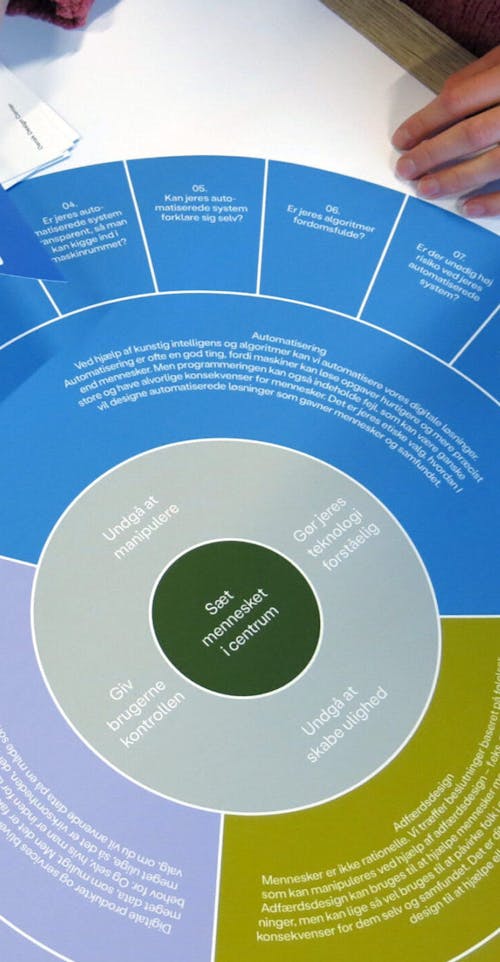
Log 9: The Ethical Organization
28. Jan 2022Who has responsibility for ensuring an ethical digital design? Is it individual employees or the company as a whole?
By Peter Svarre
This article is published in connection with The Digital Ethics Compass project.
Eichmann in Jerusalem is an important book about ethics by Hannah Arendt published in 1963, and in it, she writes about how the engineer behind the holocaust, Adolf Eichmann, excused his actions by saying he was just following orders. He was a boring and faceless bureaucrat who just did as he was told. He was not unethical. The system was. Eichmann was still hanged for his crimes, and Arendt’s conclusion was that in the end, ethical responsibility lies with the individual.
Arendt is right, of course, but one can also not ignore the fact that some systems and organizations make it easier to make ethical decisions than others. In other words, how our organizations are designed has an impact on the extent to which our employees feel like they are capable of making sound ethical choices. Designing ethical digital solutions is therefore not only about the individual employees making ethical choices – but it is also about designing an organization that promotes ethics among the individual employees. So what is an ethical organization?
Roughly speaking, it is the opposite of the organization that Adolf Eichmann found himself working for when he designed and carried out the holocaust down to the smallest detail without any moral scruples. An ethical organization is an organization that encourages people to have doubts and allows them to pose questions, which is open to different points of view and is not ruled with an iron fist from the top.
Let us dive a little deeper into seven of the characteristics that define the ethical organization:
- Doubt is the basis for ethical thinking, and therefore the ethical organization never uses checklists that cannot be questioned. It allows its employees to have doubts and to speak to colleagues and managers about them.
- The ethical organization promotes taking it slowly – when it is important. Rushing to meet deadlines and making hasty decisions is the perfect breeding ground for unethical design solutions that do not take into account the ethical consequences.
- The ethical organization is not too hierarchical. The moment an employee feels like a mere cog in a huge machine is also the moment that the employee stops thinking about ethics.
- Employees have a great deal of autonomy and influence over their working life and the products they work with. If people can feel the consequences of their decisions, they also begin paying more attention to ethics.
- The ethical organization is an open organization where employees feel like they understand what is going on. If you are alienated from your workplace, you can quickly become indifferent about the ethics of the company and its products.
- In an ethical organization, there is a great deal of trust between employees and between employees and the management. You have to be able to say no and be honest about your doubts without being afraid of losing your job.
- Organisations with many strategic shifts and unclear leadership can quickly make employees feel like nothing matters and they might think that in any case, the management team will soon be announcing a new strategy yet again. And ethics is really all about some things being more valid than others. Therefore, the ethical organization is also characterized by having a foundation of stable values and a consistent strategy that employees can rely on when making ethical design choices.
When one teaches companies about digital design ethics, it is important to keep these seven organizational characteristics in mind. You can tell your employees to take an ethics course, but it is no use if the organization subsequently stifles the employees’ newfound ethical competencies.

Can’t get enough of design and innovation? We hear you. And we have you covered.
Sign up for our newsletter to get the latest from our world delivered straight to your inbox.
Sign up for the ddc newsletter











